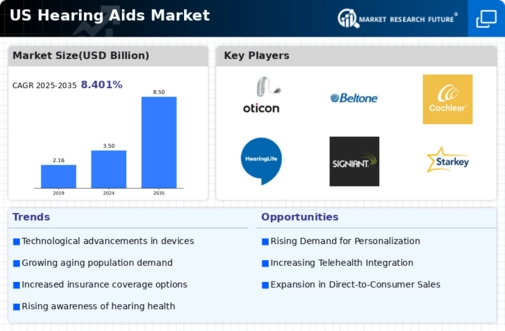The US Hearing Aids Market is characterized by rapid technological advancements, increasing consumer awareness, and growing demand for hearing solutions among aging populations. The landscape is shaped by a mix of large manufacturers and nimble startups, all vying for market share through innovative product offerings and strategic marketing. Companies are focusing on enhancing user experience through features like connectivity with smartphones and advanced hearing algorithms, catering to the evolving needs of consumers. The competition is fierce, driven by factors such as price, quality, and the ability to offer personalized solutions.
Market players are also investing heavily in research and development to create next-generation hearing aids, which further intensifies competitive dynamics. In the US Hearing Aids Market, Sonova Holding AG stands out for its strong market presence and innovative products. The company leverages state-of-the-art technology to deliver high-quality hearing aids designed to enhance user satisfaction. Sonova maintains a robust distribution network, ensuring that its products are widely available and accessible to consumers across the country. The strength of Sonova lies in its commitment to research and development, allowing it to introduce cutting-edge features such as wireless connectivity and customizable sound settings.
This technological prowess has established Sonova as a trusted name in the hearing aid market, driving strong brand loyalty among users and healthcare professionals alike. Oticon has carved a significant niche in the US Hearing Aids Market by focusing on user-centric design and advanced technology. The company offers a range of hearing aids that emphasize natural sound quality and ease of use, catering to both elderly users and professionals who require reliable solutions. Oticon’s key products include models equipped with connectivity features, such as Bluetooth, that facilitate seamless interaction with smartphones and other devices.
With a solid market presence, Oticon continues to strengthen its position through strategic collaborations and occasional acquisitions aimed at enhancing its technology offerings and expanding its customer base. The company’s commitment to innovation and high-quality service solidifies its reputation, making it a formidable competitor in the US hearing aids sector.






















Leave a Comment